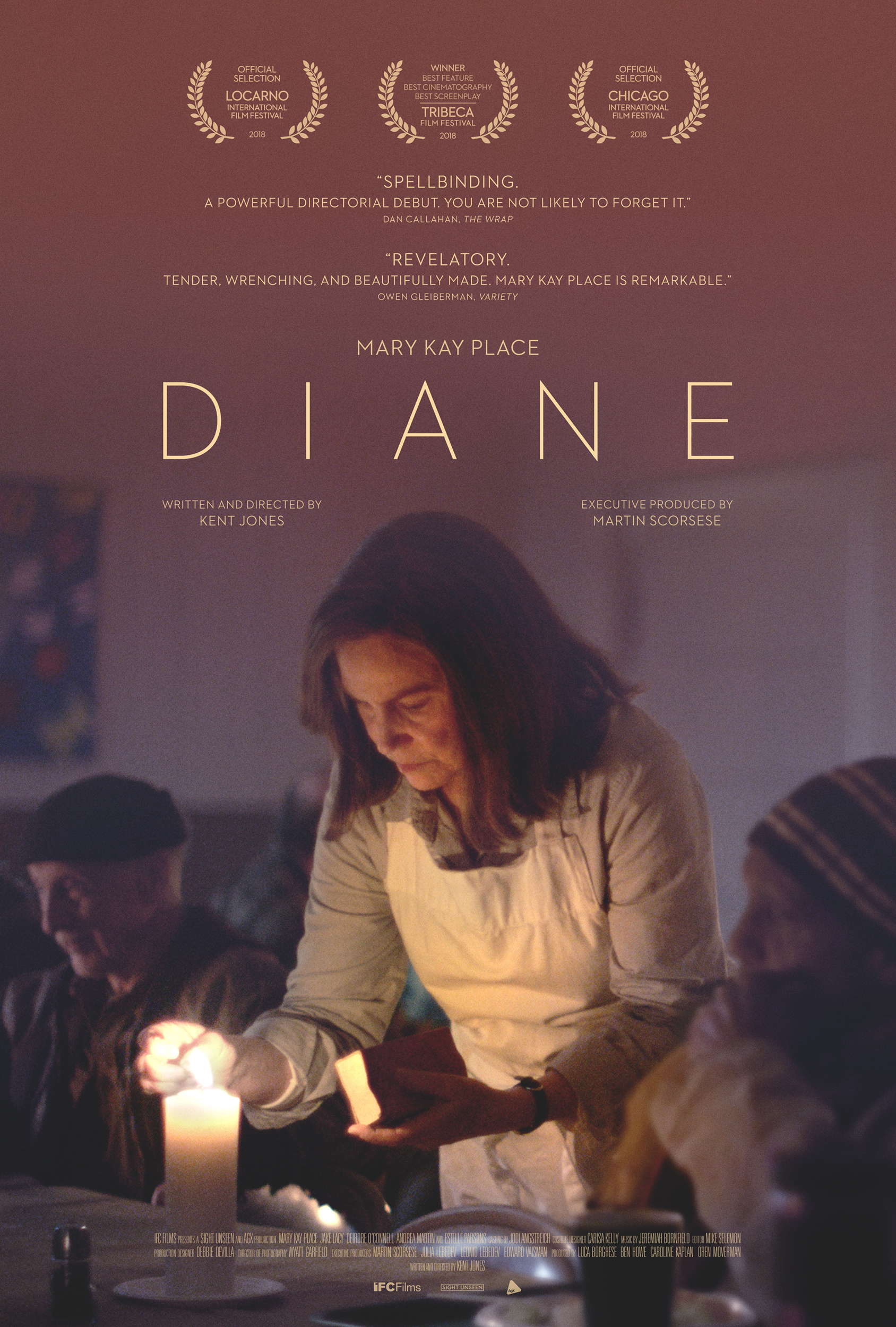Film Review: Diane (2019)



At first glance, one might get the idea that Diane (Mary Kay Place, in a truly wonderful performance) is a punching bag. She spends her days checking in on family, visiting sick relatives, and delivering casseroles to neighbors. She also works in a soup kitchen and does the laundry for and brings food to her adult drug addict son (Jake Lacy). After a time, though, we come to realize that she’s nobody’s fool and that the services she provides are done so out of a deep guilt she’s been holding onto for some time. In truth, Diane has no trouble standing up for herself whatsoever. And what’s more, aside from her son, her service to others is genuinely and affectionately appreciated by the family and community she lives among – and unquestioningly reciprocated when needed.

Diane is a film about the damage strongly held guilt can do, but it’s also a quiet and honest look at aging and dying. It’s cast of characters is mostly working-class elderly women (including the amazing Andrea Martin and Estelle Parsons) who support each other through the ups and downs of small-town life. There is no poking fun or condescension about their way of life, though. It’s not portrayed as hokey, backwoods, or ignorant. The people that make up Diane’s colorful cast are fun, honest, and determined.

In one scene, a large group congregates around a kitchen table. The women – who are all cousins, aunts, or other close relations – sit and tell stories while the men hang back and the children sneak in for cookies. The room is cramped but the spirit is alive and gregarious. It’s very sweet, and as someone who comes from such a family (I can’t even count how many cousins I have), I found it to be some of the most sincere and honest filmmaking of the year. In an understated but visually and emotionally effective turn, the gathering around the table gets smaller as the film progresses. Director Kent Jones’ imagery is simple, impactful, and revealing.

While rooted in a character study by way of a family drama, Diane’s cinematography and pacing often feel like something Joel and Ethan Coen might come up with. Coen-esque dissolve transitions are common, often mixed with a travel motif. The repeated use of winding roads might simply represent the miles Diane travels when helping others, but it might also be meant to show the paths one takes in life – and that you have no choice but to keep going. The color palate keeps things either deliberately cold or cozily warm – a respite from the dreary outside world. To top it off, time is compressed and contracted, adding a dreamlike quality which serves to the film’s themes of aging and memory.

The mystery of Diane’s secret, and the odd way it’s revealed – and then re-revealed, and then re-revealed again through an ethereal dream – might be considered anti-climactic to some, but not to me. The uniqueness of the story’s unfolding is a refreshing change of pace. There is no big revelation – no arm waving, screaming confession. Not all is explained to its fullest, mind you, which may trouble viewers who require neat packages and clear-cut explanations. I am not one of these viewers, but even if I were, Diane has more than enough style and story to keep your attention. On top of everything else, Mary Kay Place turns in a mesmerizing, powerhouse performance. For that alone Diane is worth a look.
